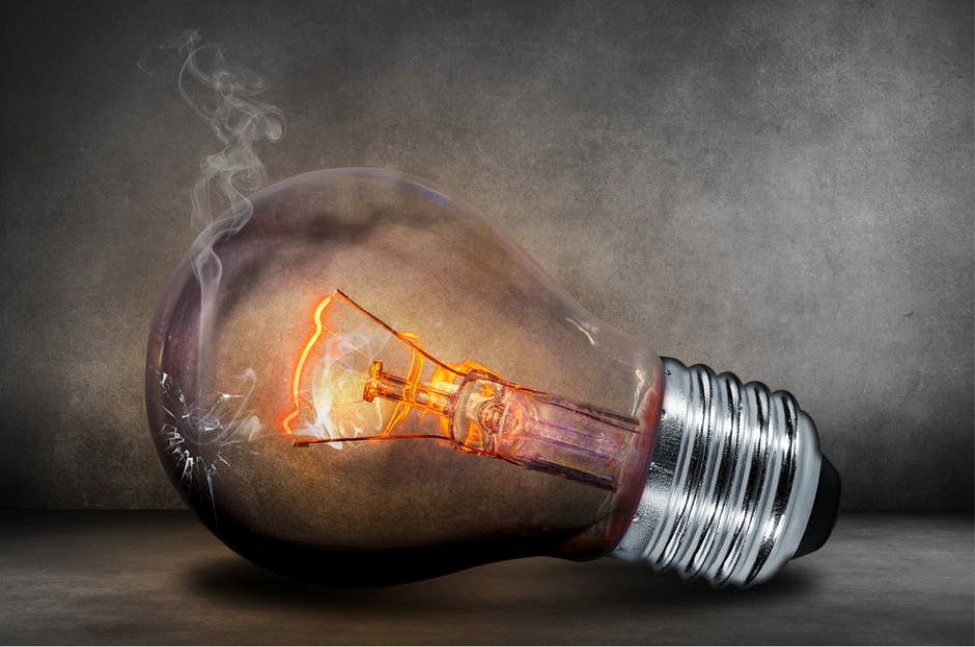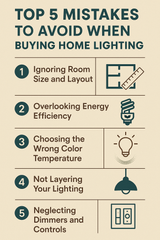8 Common Interior Lighting Mistakes to Avoid
8 Common Interior Lighting Mistakes to Avoid:
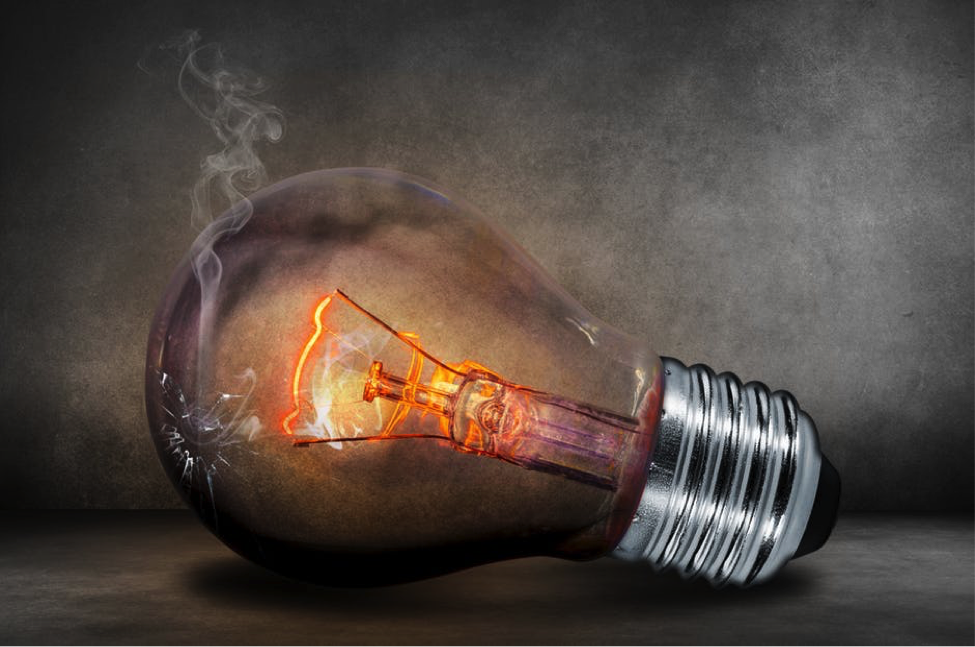
Too often, you may think that you’ve chosen the best fixtures and have adequate illumination in your space. However, after a while, you may start to notice that your space doesn’t seem bright as it should be, or maybe it is so bright that you frequently deal with migraines or eyestrain – or even, you may realize that the fixtures you chose are exactly what you had expected.
Regardless of the scenario, there are some things you should keep in mind when making use of illumination in your space and picking the best fixtures:
1. Only Using Light from a Fan as a Source of Illumination
This is a common issue in many homes, especially for bedrooms, living rooms, and family rooms. Out of all the options of fixtures to choose from – from pendant lights to barn lights – many only choose to install and utilize a fan that’s equipped with illumination. Big mistake.
One problem with relying merely on a fan as a source of light is the fact that there will be low-quality light in your space. While this illumination may be plenty overall, the issue is that there won’t be bright enough light nor task lighting present for completing certain responsibilities or tasks (e.g., working, reading, etc.).
Secondly, only using a fan for illumination is a no-go if something happens to your one and only light unexpectedly. While clearly a bulb can be replaced, or improper electrical can be tended to, the issue is that there’s an inconvenience tied to this, and you may be without light in your room for a while until it gets fixed.
2. Installing Only One Type of Lighting
For most, ambient or overall lighting is one of the most integral types of illumination out there – but it becomes a problem when this is all you rely on. Others may even only opt for task lighting or accent lighting in a room, when really, a variation of all three could beautifully be used in the same space.
Another common problem regarding only using one type of illumination is the fact that many only gravitate towards recessed lighting. Yet, there are a plethora of fixtures out there that provide beyond such illumination such as chandeliers, wall sconces, and post lamps.
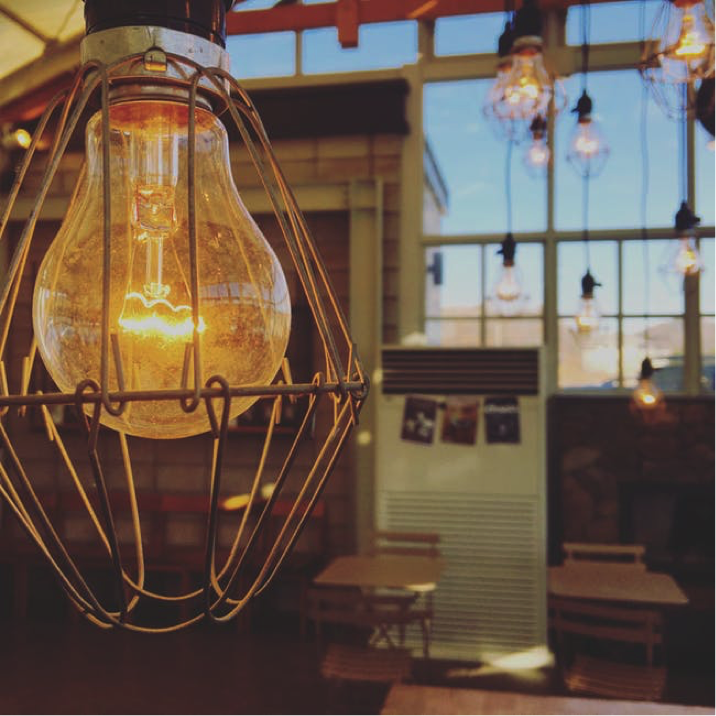
3. Using Little Lighting in Smaller Spaces Because, “There Isn’t
Enough Room to Install More”
While illumination should definitely be chosen based on the size of the space and other features in the room, making an excuse to provide little lighting for a room because it’s small is not a good option.
This is where #1 comes back into play; many often use a fan for illumination in a tiny space, only have a chandelier in the center of the room for light (especially in dining rooms), or even have a few pendant lights present in, say, their kitchen but that’s it.
Instead, treat a smaller space the same as you would a larger room: something that is worthy of a variation of illumination. The only difference for a smaller space is that this often means having to pick out light fixtures that are taller and skinnier or hang on the ceiling or wall over picking larger pieces or bulky lamps.
4. Not Taking Advantage of Dimmable Light Fixtures
Many are aware that chandeliers, lamps, and other fixtures can often be dimmed – but when was the last time you can honestly say that you used such a feature on some of your own fixtures? Probably never or only once in a great while.
The issue isn’t whether or not you have dimmable fixtures but rather that many people have lights that offer such and then never use them. Yet, dimmable lights have the potential to bring romance to a room, turn a casual space into something formal, or turn a chaotic design into something relaxing.
Dimming the lights is also a great way to wind down after a tiring day or simply reducing the illumination in a room because you have a headache or eye ache. Versatility is key. Just having the option to dim a light fixture is something to be grateful for when in times of need.
5. Failing to Use Picture Lights to Light Up Artwork
Picture lights are important for properly lighting paintings on a wall. Choosing an LED art light for a piece of hung art is something underrated; not everyone does it, but it’s something you should consider due to its benefits.
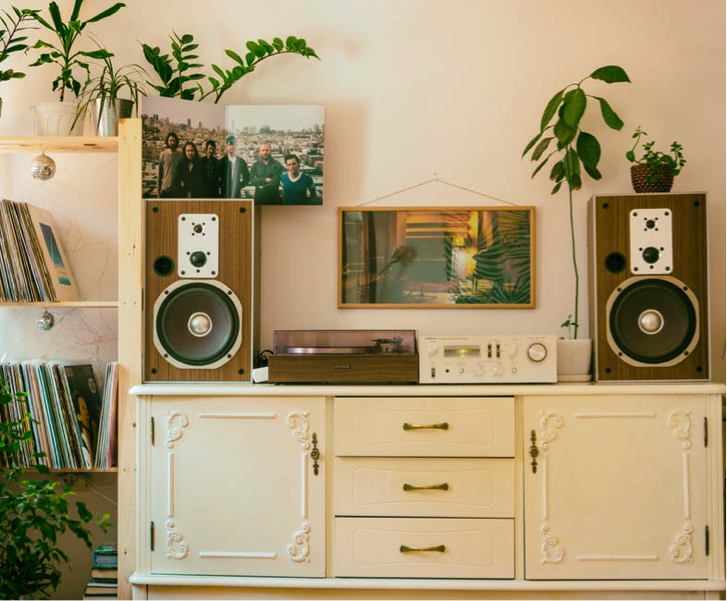
To light a picture is to bring focus onto it, making it a central and even more beautiful piece in a space. Cocoweb.com has a gorgeous selection of these special lights to ensure any picture or painting you have is well-equipped and best represented to literally make it glow in a design.
6. Implementing Fixtures That are Too Tiny for a Space
How many times have you gone light fixture shopping only to think in your head that a fixture you come across might be too big and obnoxious, so you end up going for the smaller piece?
The reality of this is that many play it too safe. They’d rather go way too small than slightly too large. While any extremity – too big or too small – is never a good, the problem is that people sometimes choose the smallest fixtures and stick with it without opting for bigger options when they realize that it isn’t an adequate fit.
Yet, when it comes to a fixture that is too large, people are quick to take it back to the store where they bought it from. With this in mind, if you notice that your fixtures are too small, add more or opt for a larger one. Otherwise, you’ll be limiting your illumination potential significantly. For instance, if you opted for a single pendant light for your space, consider added a row of more pendant lights rather than swapping out your single light for a larger fixture.
7. Choosing Fixtures Just Based on What is Trendy
When you need a little design inspiration, there is nothing wrong with checking out magazines, surfing the Web, or even referring to Cocoweb.com for advice. However, picking out your own light fixtures isn’t just about choosing what is up-to-date and popular, it’s about picking something well-suited for your interior design and something that you love.
Individuals who choose fixtures based on trendiness are more likely in the near future to buy new lights as 1) something else becomes popular or 2) they realize that the fixtures they chose aren’t their style. Based on this, go for what you desire more than what is popular. It’s the only way you can commit to a fixture for many years to come, thus, saving money in the long run.
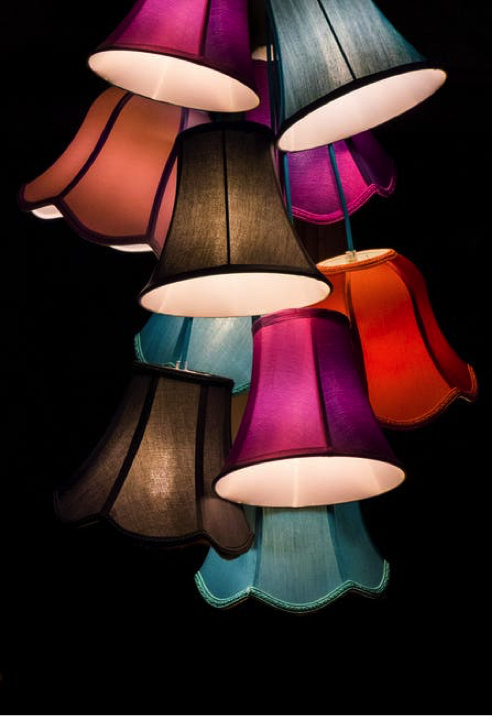
8. Always Choosing the Biggest, Brightest, and as Many Lights as
Possible Because, “The More the Merrier”
Sometimes less is more. When you walk into a space that just has too much of anything – illumination, color, patterns, furniture, etc. – it can be stressful. Considering this, make it a goal to make your interior design well-lit without making it appear “too much.”
Use your instincts to tell you what the right fixture size, brightness, and amount of light fixtures your space needs, but if anything, start out with less, because otherwise, you’ll be significantly hurting your wallet in the process! There is always such a thing as too much, or even not enough, when it comes to lights.
Conclusion
When it comes to making illumination work in an interior design, nothing is more important than being versatile, variant, and strategic in the fixtures you choose, the quantity and size of the fixtures you opt for, and the style of lights you select based on what you personally like.
While there usually are no rights and wrongs in interior design, not taking full advantage of what could be is one of the biggest mistakes one can make. That said, putting hard work and dedication into picking out the right pieces is important to reflect who you are and what you adore through the fixtures you select. As for a great go-to source, opt for Cocoweb when it comes to your light fixture needs as there are thousands of options at hand.
Recent Posts
-
Top 5 Mistakes to Avoid When Buying Home Lighting
Lighting plays a crucial role in shaping the ambiance, functionality, and aesthetic appeal of your h …26th Jun 2025 -
Why Lighting Is the Most Underrated Design Element in a Room
Walk into a well-designed space, and you might first notice the color of the walls, the statement fu …13th May 2025 -
How to Choose the Perfect Painting for Your Home or Office
When it comes to decorating your space, choosing the perfect painting can be a game-changer. A well- …7th Feb 2025

